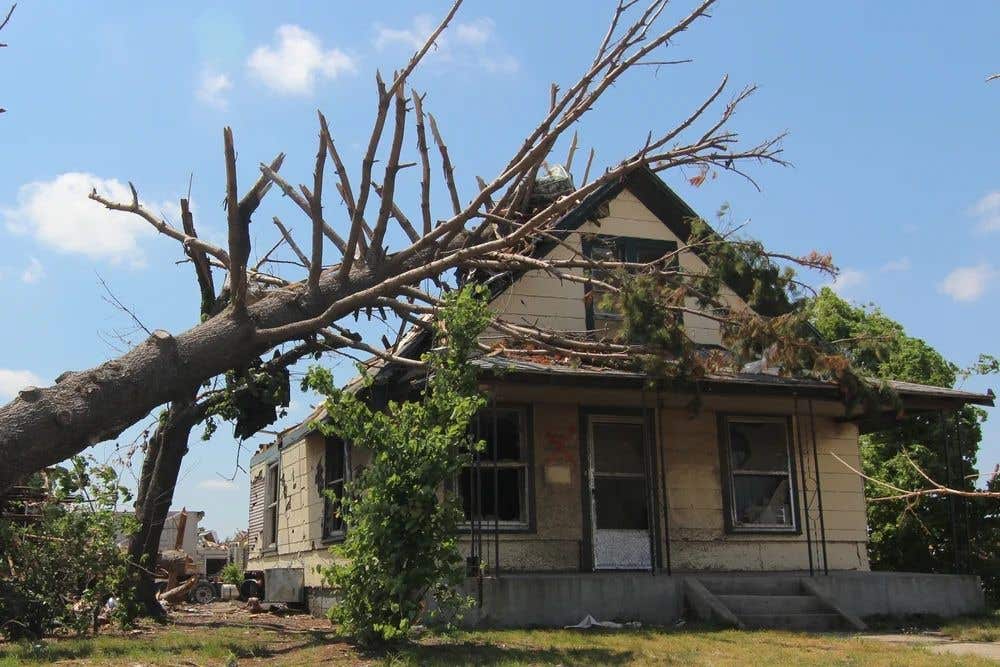Whether you call it a tornado or a hurricane, a windstorm can cause extensive damage to your home. So why does the average homeowner near Hurricane Alley pay more for their home insurance than those living in Tornado Alley?
For insurance providers, the risks are actually quite different. Let’s take a look at tornadoes and hurricanes so we can better understand the costs.
What is Tornado Alley?
Tornado Alley is a tornado-prone stretch of land between the Rocky and Appalachian Mountains. While there is no set border (and the area generally recognized as Tornado Alley may be shifting), the term usually includes parts of:
- Texas
- Oklahoma
- Kansas
- Nebraska
- South Dakota
- Iowa
- Missouri
- Illinois
What is Hurricane Alley?
Hurricane Alley is an area in the Atlantic Ocean where warm surface temperatures create the opportunity for hurricanes. From June 1 to November 30, the states along the US eastern coast and the Gulf of Mexico face a high risk for hurricanes. In fact, NOAA’s Hurricane Research Division reports:
- 40% of all US hurricanes hit Florida.
- 88% of major hurricanes hit either Florida or Texas.
Tornadoes vs. Hurricanes: What’s the difference?
Whether you live in Tornado Alley or Hurricane Alley, your home faces potentially damaging windstorms. But that doesn’t mean hurricanes and tornadoes are the same – or that they do the same kind of harm.
For example, the National Oceanic and Atmospheric Administration (NOAA) tells us that the US sees about 1,200 tornadoes per year. That sounds like a lot – and it is – but tornadoes are spread out over several states.
Unfortunately, tornadoes are unpredictable. The average lead time for a tornado warning is just 11 minutes. However, they’re also relatively short windstorms. The most severe may last an hour, but the most common tornadoes are over in about 10 minutes.
The most severe tornadoes can have wind speeds of up to 300 mph. However, NOAA says 69 percent of all tornadoes fall between 65 and 110 mph. For comparison, a major hurricane, category 3 or above, reaches wind speeds between 111 and 129 mph.
Hurricanes are also more predictable. Scientists can usually predict a hurricane’s path between 3 to 5 days in advance. Moreover, the average hurricane season only sees about 10 named storms, but those storms usually cause more damage than tornadoes. That’s because the wind and rain from a hurricane can last up to three weeks.
Hurricanes win when it comes to size, too. NOAA says the widest damage path for a tornado was 2.5 miles. The largest hurricane by diameter was Olga in 2004. That storm was 995 miles wide. Hurricanes also cause storm surges, which means homeowners in hurricane alley have to worry about both wind and water damage.
Tornadoes vs. Hurricanes: a side-by-side comparison
| Tornadoes | Hurricanes | |
|---|---|---|
| Lead time | ~11 min | 3 - 5 days |
| Average Number | 1,200 per year | 10 per season |
| Wind speed | Up to 300 mph | Up to 157 mph or more |
| Duration | Up to a 60 min | Up to 3 weeks |
These numbers show just how important it is to have homeowners insurance in Florida and Texas. But how do the differences between hurricanes and tornadoes impact the cost of your home insurance?
Why home insurance may cost more in Hurricane Alley
Insurers look at a number of factors to determine home insurance premiums. One of the biggest is the weather. Homeowners in Hurricane Alley face a greater risk of catastrophic weather events because of how long and how strong hurricanes can be. As a result, these homeowners typically pay higher premiums.
But it’s not just the premiums that make their home insurance more expensive. In Hurricane Alley, homeowners may also have to:
- Pay a percentage deductible. Nineteen states and Washington DC require homeowners on the coast to pay a hurricane deductible for their hurricane home insurance. Instead of paying a flat dollar amount, they pay a percentage of their home’s value. This helps insurance companies pay for the enormous claims that come in after a hurricane.
- Buy flood insurance. Standard homeowners insurance doesn’t cover flood. Considering FEMA estimates that just an inch of water can cause more than $26,000 of damage in the average home, purchasing flood insurance is usually recommended.
Having high hurricane risk makes insurance a no-brainer. However, you can also help mitigate losses by planning ahead. Find out how in 6 ways to hurricane-proof your home.


